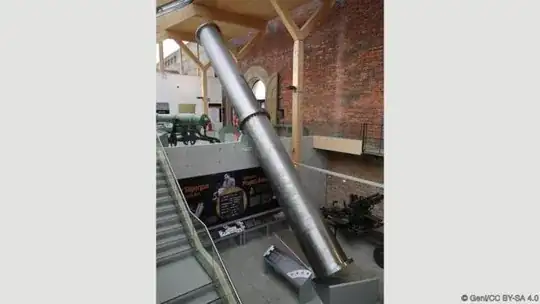I should say first that I don't believe this is a feasible launch method, otherwise NASA and other space agencies would be using it by now.
It's based on this BBC news story Saddam Hussein's Supergun but, luckily this monstrosity was never completed or even fully tested.
These giant cylinders are one of the few remaining pieces of a contender for one of the most audacious pieces of engineering ever designed: a “supergun” called Big Babylon, which could have fired satellites into orbit from a 156m-long barrel (512ft) embedded inside a hill.
Rather than thinking of the engineering aspects of the gun, what are the physics based reasons why we cannot arrange a series of linear explosions, with a valve type device to prevent blowback down the barrel at each stage and thereby maximising the upward boost to the payload to escape velocity.
Again, I would stress that I believe there are physical (rather than engineering) reasons this idea is not used today. I just don't know what they are. Is it as simple as the barrel would need to be unfeasibly long, even using the most powerful explosives we have available today?
The Project Harp Launch Gun was tested in the 1960s but never achieved more than half the escape velocity required.
Merci beaucoup, Jules Verne (1828-1905). From The Earth To The Moon
